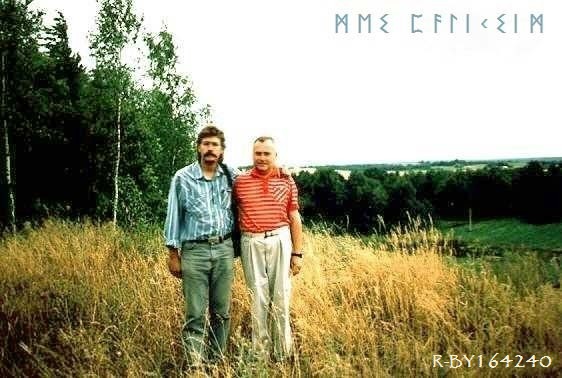
Looking South to Vištytis LT, from on top of Dabravolė castlehill.
ᛊᚢᛃᚾᚢᛊ ᛊᚨᚾᛁᛞᛟᚹ
D A B R A V O L Ė
54.479473° North, 22.783361° East

Looking South
to Vištytis LT, from on top of
Dabravolė castlehill.
ᛊᚢᛃᚾᚢᛊ
ᛊᚨᚾᛁᛞᛟᚹ
~ R1a1a1b1a3a1a3d
~
R-BY164240
R1a1a > Z284 > L448 > CTS4179 >
YP704 >
BY164240
Paškevičius - FTDNA Kit # 230573 > R-BY164240
* FTDNA Big-700 results
/ Yfull id:
YF86015
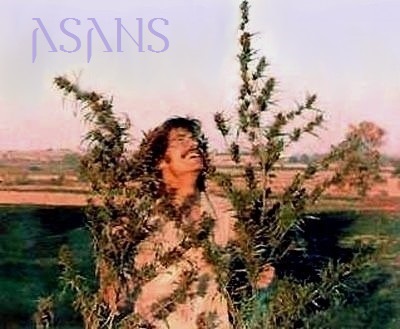
ᛊᚾᚨᛊᚨ ᛊᚾᛁᚹᚨ
Яцвезь Ятвезь Jatwieź
Jaćvieź Яцвезь Jatwiez
Jatwez Jatvez Yatvez Yatviez Jatviez Яцвеск Ятвеск
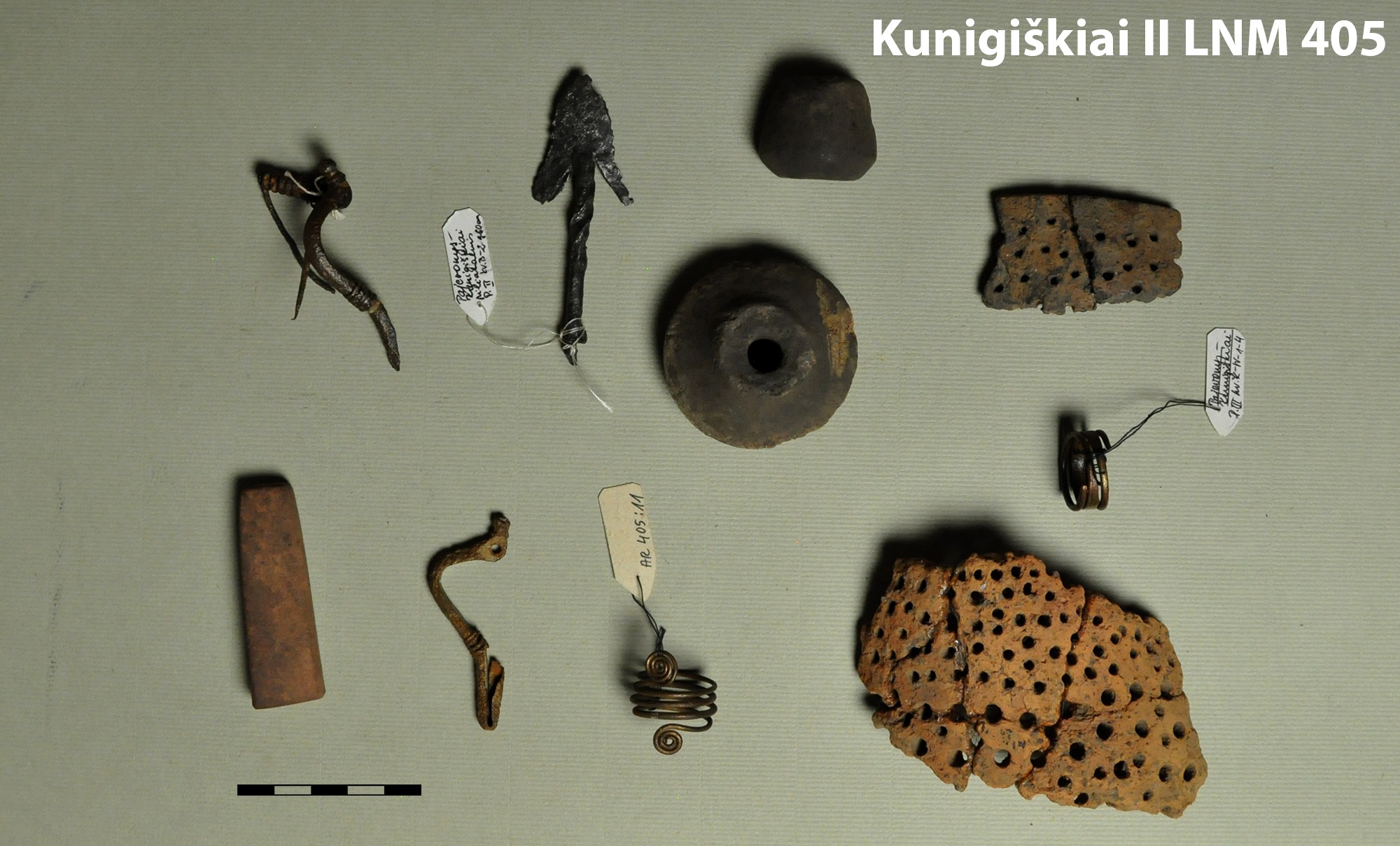
Radiniai iš Kunigiškių piliakalnio - Lietuvos
Nacionalinis Muziejus, inv. Nr. AR 405
Artefaktų, ypač susukto žiedo, sagės ir romėniškų monetų
( Tiberius / Caligula
/ Claudius ),
amžius rodo
prekybą III a., panašu R-BY164240 Paškevičių.
The crossbow brooches with a bent foot (
3 brooches from Pajevonys-Kunigiškiai hillfort )
indicate human activity
around the 3rd century AD (C1a-C2 ). A spiral ring of Beckmann type
35a most probably was
produced during the 3rd century AD (C1a-C2 ).
This type occurred
mostly in coastland areas, so the Pajevonys-Kunigiškiai find
expands the geography
of this fashion.
Several finger rings from Pajevonys-Kunigiškiai were with a broadened
frontal
coil, which is characteristic of the
earliest part of the Migration period.
Spurs observed within the area occupied by
the Sudovian culture
developed
in
phases B2/C1–C1a of the Roman Iron Age. Pajevonys
has 3 major hillfort sites - Šakių piliakalnis, Ragaišių piliakalnis,
& Pajevonio (Kunigiškių) piliakalnis
|
The Sūdovians adopted a Wielbark Gothic like weaponless burial observance. The Tiberius coin from Pajevonys, LT would suggest the interaction lasted for centuries. Inter-marriage probably was not uncommon. Ancient Wielbark culture Mtdna H5a1 would seems to support such mixing with Balts. The higher than expected frequency of the LWb+ antigen - LW*07 allelle ( aka Nea red cell antigen ) in Hungary ( 0.4% ) may well be related to the Goths, since southern Sweden had a similar ( 0.3% ) frequency, and Gotland has even more ( 1.0% ). Lithuanian linguist Kazimieras Būga derived Lith. vokietis from the old name of the Gotland Vagoths ( re: Icelandic vogur, Shetland voe, Finnic vuojola, Sami vuowjos ). It is not a stretch to imagine *vāg-aitis > *vog-aitis > vokietis "Gotlander > seafarer", or "foreigner" . Contacts were quite common ( re: LWb+ in Gotland ). The Nydam axe "vagagastiz" may suggest Lith. vokietis reflects an older "wave-traveler", "seafarer" or "foreigner" term using related Scandinavian ( Old Norse Vágr - sea, wave ) terminology. Such a bi-lingual etymology of "vokietis" may well reflect prolonged bi-lingual contacts as expected near Grobina / "Seeburg", or perhaps Kaup, between Gotlanders & Balts ( Gotlandic would adopt Baltic loanwords for Gutnish "kleti" - barn, and even Gutnish "mausä" - fly, insect ), and "vokietis" would persist with the evolving semantics of "Germanic seafarer" > "Germanic speaker". The 3rd-5th century "conversion" of "East Germanic" Gothic & Vandalic to "North Germanic" left scattered traces of it's earlier use, just as West Baltic dialects left relics spoken after East Baltic dialects quickly replaced them. A comparison of Gothic "saiso" with Old Norse "seri" provides evidence for reduplication hidden by rhotacism. Finnish and Estonian still use "ja" reflecting a Gothic "jah". Continental Gothic was essentially a socially disconnected outlier from the W. to E. sweeping changes ( with umlauts & rhotacism ) that took place back in Scandinavia, which fortunately survived intact as Wulfila's written Gothic of the Codex Argenteus. Trade contacts ( preceeding Hedeby / Birka ) would also export & accelerate the newer infectious speech changes adopted in other distant regions with trading centers. With trade came a social attraction to innovation. The runic scholar, Henrik Williams, has noted that there is a boundary in dialect discernible in runic inscriptions between the south-west and north-east (Williams, 1996: 439). That boundary survives as a relic, reflecting the forgotten past, & now forgotten languages.
Recomended Reading / References During the Wielbark culture, and the later cultural fusion of the Wielbark-Chernakhov Culture era, a West Baltic "kanăpis" agricultural term was probably borrowed as *"hanapis" into some 1st-2nd century Gothic dialects of southern Scandinavia. The earliest evidence for hemp cultivation in Scandinavia, specifically in the Malmo region of southern Sweden, began during the 1st-2nd centuries AD - centuries after Wielbark contacts & cultural mingling with various West Baltic speaking tribes. The dialect characteristics of Wulfila's Biblical Gothic, like the Samlandian of the Prussian Catechisms, invites a heuristic approach. Weilbark settlements were often a mile or two from the villages of West Baltic speaking trade contacts. Hails / Kails. So Goths came from Götaland, like Sūdovians came from Sūduva. Who knew? Ptolemy. Nobody "Vanished".
ᛗᛖᛊ ᛈᚨᛚᛁᚲᛊᛁᛗ
Götaland
<
R-YP4638 >
Galinda (Mazovia) |
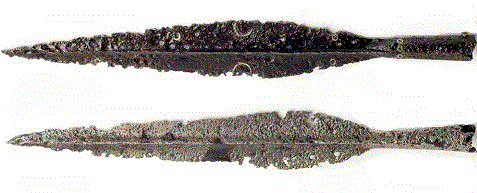
Spearheads from grave 1 from barrow 2 in Szwajcaria
by Suwalki Poland.
Type 15 / Vennolum according to J. Ilkjćr. Phase C1b.
One was decorated originally with a silver inlay, the other with a zigzag motif,
Spearheads with a zigzag decoration are usually confined to Scandinavia.
Roman coins ( Tiberius / Caligula / Claudius I ) from
Kunigiškiai ( near Pajevonys, Lithuania )
predate 2nd Century Ptolemy's mention of Σουδινοί.
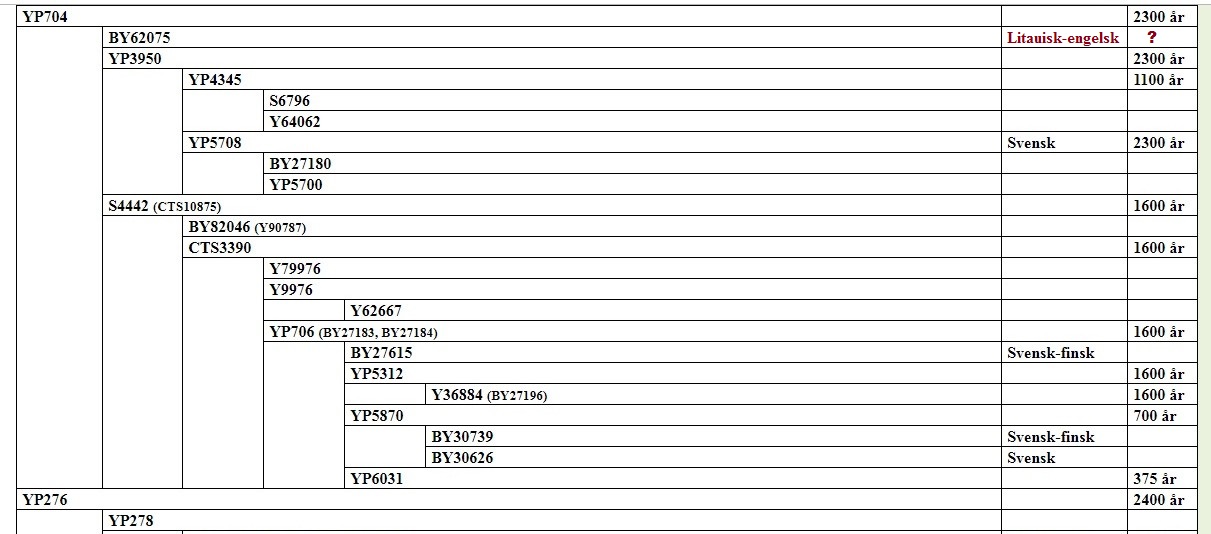
R1a1a > Z284 > L448 > CTS4179 >
YP704 > BY62075 >
R-BY164240
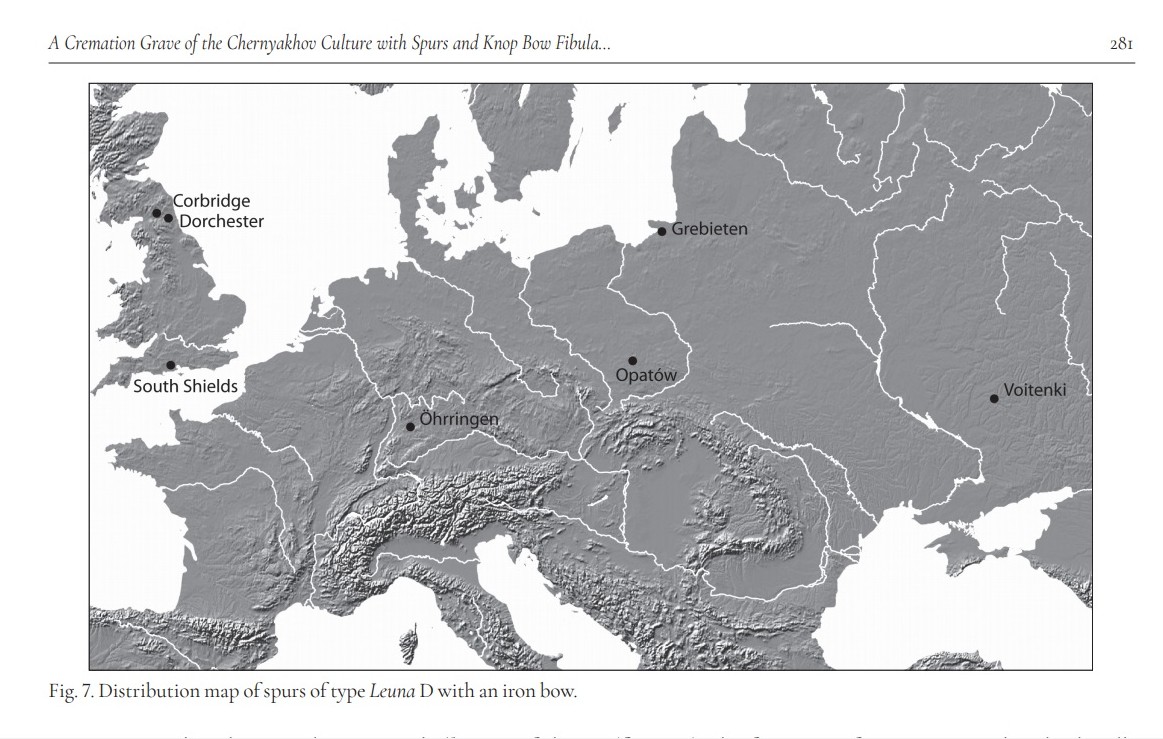
Similar distribution pattern of spurs & BY62075 ( R-BY164240
)
FTDNA Big-Y Blocktree 17 private SNP blocks would imply 1700
ybp,
or the Wielbark-Chernakhov Culture era
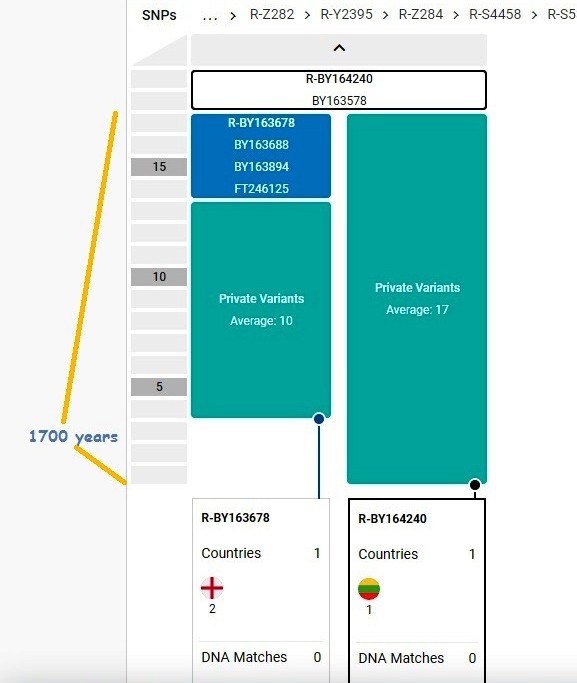
𐌲𐌿𐍄𐍂𐌰𐌶𐌳𐌰 𐍅𐌰𐍃 𐌿𐌽𐍃𐌰𐍂 𐍆𐌰𐌹𐍂𐌽𐌹 𐍂𐌰𐌶𐌳𐌰
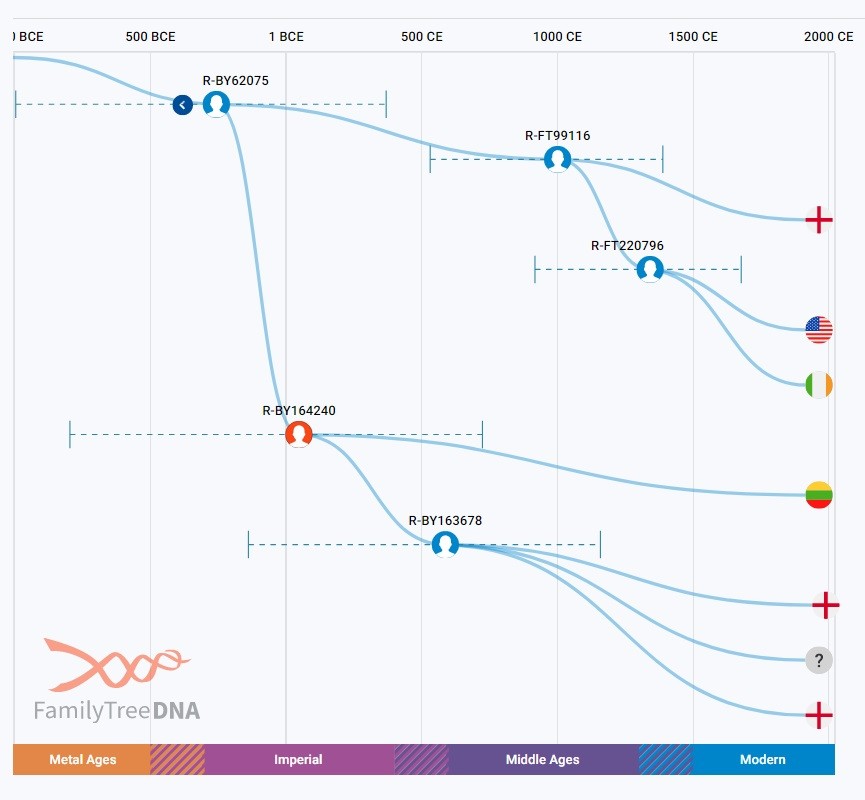
FTDNA's SNP Time Tree for
R-BY164240
(Correlating with phases B2/C1–C1a of the Roman Iron Age)
Yfull id:
YF86015
𐍈𐌰𐍃
𐍅𐌹𐍃𐍃𐌰?
ᛗᛖᛊ ᛈᚨᛚᛁᚲᛊᛁᛗ
In
memory of
Sigitas Paškevičius
ᚠᚱᚨᚢᛃᚨ ᚨᚱᛗᚨᛁ